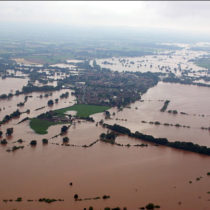Landscape Architecture for Landscape Architects › Forums › GENERAL DISCUSSION › Books to Teach Planting Design
- This topic has 1 reply, 6 voices, and was last updated 10 years, 12 months ago by
 Eric Gilbey.
Eric Gilbey.
-
AuthorPosts
-
April 27, 2014 at 3:31 pm #152771
 Goustan BODINParticipant
Goustan BODINParticipantHi Everyone,
Soon I will offer a 10 days training in planting design to a botanical garden staff. They do know about plants on the botanical and technical side, so we’ll just focus on how to design with them : foreground/background, trees as structure, plant by layers, how to compose with plants, group them by form, color, foliage, plant formally or naturally, modern style, mixed borders, use grasses, what/how to plant in the shade Vs sun, etc…
There is no way I can prepare by myself the necessary documents for the whole training, so I am looking for a good book to follow/adapt from. Can you recommend a good method to teach planting design ? Do you have anything on your shelves that you’d use to teach newbie designers ?
Ideally it would be a method with clear steps to follow. It’d be awesome if there was a method specialized in tropical planting, I’ve never seen one of these.
Thanks
April 28, 2014 at 8:51 pm #152794 Eric GilbeyParticipant
Eric GilbeyParticipantGoustan, Almost 25 years ago, we studied from this book, Planting Design: A Manual of Theory and Practice , which seems to still be used and latest edition shows to be around 2004. Not at all a tropical planting resource, but does provide the guidance you describe.
April 28, 2014 at 11:59 pm #152793 Andrew Garulay, RLAParticipant
Andrew Garulay, RLAParticipantI second that! It is the best book that I have seen to break it all the way down and then build it all the way back up.
April 29, 2014 at 4:58 am #152792 Goustan BODINParticipant
Goustan BODINParticipantThanks Eric, I remember Andrew recommended it to me already, and I shortlisted it for further reading.
April 29, 2014 at 6:02 pm #152791 smi32d7511Participant
smi32d7511ParticipantDefinitely the planting design handbook which is theory based:
http://www.amazon.co.uk/gp/aw/d/0754677168?pc_redir=1398341177&robot_redir=1April 30, 2014 at 12:53 am #152790 Trace OneParticipantApril 30, 2014 at 1:41 am #152789
Trace OneParticipantApril 30, 2014 at 1:41 am #152789 Goustan BODINParticipant
Goustan BODINParticipantHaha, I can see and understand where your ‘cranky contrarians’ come from !
I would probably take a similar stance myself if I was dealing with people with a common cultural background and to whom we had in common any form of ‘landscaping references’, which you refer to as “the same old same old, everything irrigated, respond to sun and shade but that is about all, and voila, every garden in the world looks like that!”.
Now, I should have specified that this botanical garden is in Laos, a country where 2/3 of the population still trades and has no idea what a banknote is. So well, talking about landscaping cultural references, there is a bit of a gap : in their environment there are 2 main landscape types, namely jungle and rice fields countryside.
We wouldn’t find any ‘designer’ garden to visit within 500 km, or for that matters even a same old same old street corner type planting. For what I know, even the 5 star hotel gardens that have been popping out recently after the UNESCO World Heritage classification barely qualify for that.
The main problem is that it won’t be possible to communicate nuances in perception and spatial feelings, as we do not possess the same pictorial references, and our respective language skills are limited (my Thai is not bad, but not good enough to describe subtleties, which they would not picture anyways ; their English is limited).
So well, I will have to stick to the program that was given me, i.e. what I described above, foreground, layers, etc, which will not be boring to these guys as it will be totally alien to them, a thundering cultural shock. This is why I *must* stick to a method with clear easy to follow steps, 1, 2, 3… and. prepare lots of pictures as visual support. It’s going to be an interesting experience
Now, if you have some planting design book that brings a twist or two to the boring same old same old, please be my guest and give me the reference, it could become quite useful under different circumstances
btw, elephants will not be allowed in the garden and must be parked outside.
April 30, 2014 at 11:12 am #152788 Trace OneParticipant
Trace OneParticipantYour sense of humor should be helpful, but it seems to me that since it is in Laos, with serious environmental problems, this is an opportunity to jump OUT of the western landscape design box. I recommend Design with Nature, of course – why can’t each planting be a little ecological restoration? Are not their own forests good patterns to study, is it not it be worthwhile to go over their natural landscape’s beauty and value?
No, I stick with the posts I keep deleting (for some reason..). This traditional planting design approach (foregound background, colors, all that garbage) is total snoozeville, and has even less meaning in Laos. The message is NOT more subtle, I disagree with that point. They need to have fun with design, broaden their minds to see many different possibilities with historical examples, and teach them to appreciate the complexity of real landscape, not just Holiday Inn style planting beds.
Go out into the woods and draw what is there, what nature has done, figure out why it looks the way it does, in little mystery stories, and you will have a much more dynamic class, and actually quite a bit simpler, since their brains have to work, not just copy. You may find that they love their land, they know why, and you will go away the enlightened one.
PS, how did I know you have to teach them where to put elephants?
April 30, 2014 at 11:46 am #152787 Trace OneParticipant
Trace OneParticipantpps, why underestimate Laotians interest in the state of the art?
http://www.asla.org/2012studentawards/124.html
April 30, 2014 at 11:50 am #152786 Andrew Garulay, RLAParticipant
Andrew Garulay, RLAParticipantPlanting design theory has nothing to do with culture or ecology. It is understanding the various visual effects of any planting composition whether it is created by nature or white guys in grey suits. It is about breaking it down for analysis so that you or I can understand what we are looking at. It also empowers us re-create something we have seen before or avoid what we see as mistakes through understanding many different nuances involved in the visual landscape rather than only seeing the more obvious ones.
Nowhere is this more important to understand than where someone is trying to restore/re-create a natural landscape.
Design with Nature is not a planting composition design book. It is a great book and a great way of thinking, but does not address visual planting composition.
April 30, 2014 at 3:28 pm #152785 Goustan BODINParticipant
Goustan BODINParticipant//I just self-censored a pamphlet which has nothing to do with the topic. Let it just be said that the average Lao has never had a chance to go to the West, even less study in harvard//
Now, I will certainly not underestimate their capacity for Art, which is clearly demonstrated to anyone who visits the exhibition spaces in Luang-Prabang.
I also over-heard that 2 of the staff I will train have some flair for planting design : one of them in some sort of ‘rigid’ way (and will most likely benefit from a strict method to follow), the other one having some ‘real talent’, kinda like contemporary composition. This guy will not care about the method that you teach : he is able to position himself alone. He will benefit from conversations, books and practice.
So, let me get back to the topic : if you have some books that teach what you preach, please shoot.
April 30, 2014 at 3:35 pm #152784 Goustan BODINParticipant
Goustan BODINParticipantI suggest you go walk in the jungle (I’d be happy to oblige), then I suggest you spend some time in a rural village there (I know the right place), to have an idea of what you’re saying, before pushing this ‘debate’ further.
Just note that opening a ‘window’ on western design is actually opening for them a window to the world. They will take it from there.
April 30, 2014 at 3:35 pm #152783 Goustan BODINParticipantApril 30, 2014 at 3:43 pm #152782
Goustan BODINParticipantApril 30, 2014 at 3:43 pm #152782 Trace OneParticipant
Trace OneParticipant@Goustan and Andrew Garulay:
I lived in the P.I. for two years, so I know the jungle (climbed a perfect cone volcano! really cool.) The book you seek is Design with Nature, and limiting planting design to visual impact only is absolutely ridiculous.
So far we have strayed from thinking about the landscape, from the advanced thinking of the sixties!. Sad.
And if your students are so local, what the heck is wrong with showing them a full gamut of design styles, including Martha Schwartz plastic – do you think they can’t understand it? I submit they know their land better than you ever will! Ask them what grows where and why..wet areas, rivers roads – what grows where there are landmines? Think about it.Don’t condescend!
I love a good argument
thanks.
April 30, 2014 at 4:03 pm #152781 Goustan BODINParticipant
Goustan BODINParticipantHmmm, Andrew, not sure I exactly understand what you mean, so please forgive me if I miss the point.
When I came to SEAsia for the first time, I understood that everything I knew about landscape architecture had to do with my cultural background. Here the contrast is so strong that you understand that the way you see and analyse things has to do with how you learned to do it (= your culture). The trip to Asia is worth it if only for that alone.
Now, back to the topic :
From what the owner of the garden said, this short training (only 10 days) will be repeated time and again, but this first one should lay down some foundations to empower the garden’s staff to experiment on their own after I’m gone.
We will not restore/re-create Nature : we will learn how to do planting design for a botanical garden. It is an exercise which has its rules, its requirements, its history (like in Colombo), also its room for creativity and experimentation (like in Bordeaux ). And it doesn’t need to be boring !
*edit* we’ve been writing at the same time and the result is rather confusing ; Andrew, I was not suggesting you the jungle trip, though I’d be happy to go for a walk with you if you ever come around here
-
AuthorPosts
- You must be logged in to reply to this topic.




